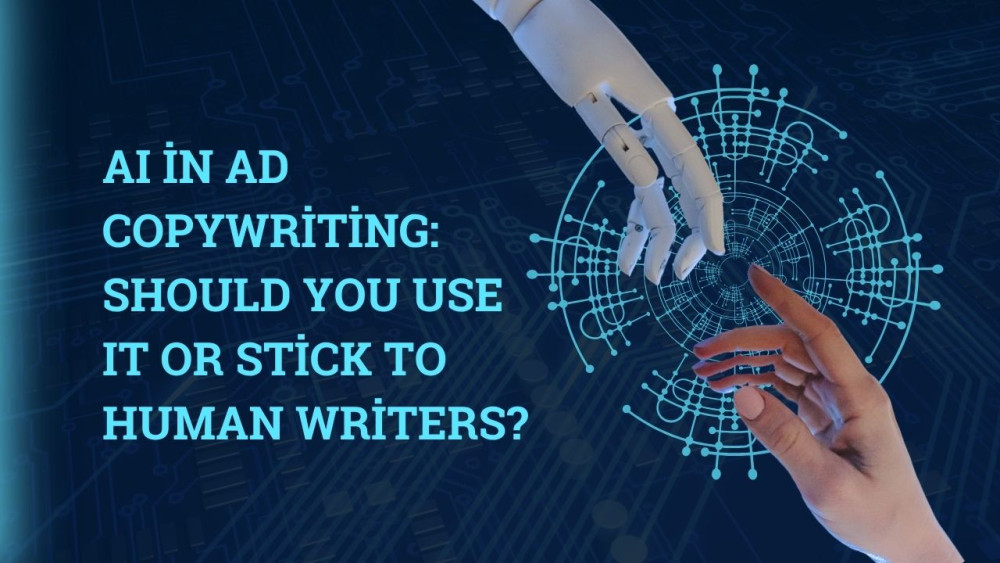In the fast-paced world of digital marketing, efficiency and performance matter more than ever. One question that marketers and brands are asking is: Should I use AI to write my ad copy?
It’s a valid question—and not just because AI tools like ChatGPT and Jasper have exploded in popularity. With the promise of instant headlines, automated A/B testing, and optimized messaging, AI seems like a marketer’s dream. But is it really the best solution for crafting ad copy that converts?
Let’s break it down in simple terms and see when AI makes sense—and when human creativity still wins.
What Is AI Copywriting?
AI copywriting uses machine learning models to generate text based on large datasets. These tools can produce ad headlines, product descriptions, call-to-actions, and even full landing page copy.
Popular AI tools include:
ChatGPT (OpenAI)
Copy.ai
Jasper
Writesonic
These tools analyze successful ad formats, language patterns, and performance data to suggest or generate copy that fits your goals.
The Rise of AI in Marketing
According to a 2024 Salesforce study, over 58% of marketers now use some form of generative AI in their campaigns. From email subject lines to Instagram captions, automation is being embraced across the board. The key reasons are clear:
Faster output
Consistent tone
Data-backed suggestions
But here’s the catch: just because AI can write, doesn’t always mean it should.
Why Brands Are Turning to AI for Ad Copy
1. Speed and Efficiency
AI tools can generate 10 headlines in under a minute. That’s perfect for fast-paced A/B testing or when working with tight deadlines.
2. Cost-Effective
Hiring a skilled copywriter can be expensive—especially for small businesses or startups. AI gives a budget-friendly option for generating bulk content.
3. Data-Driven Optimization
Some AI tools can analyze past ad performance and suggest improvements for higher CTR (Click-Through Rate) and conversions.
Where AI Falls Short
1. Lacks Human Emotion
AI is smart, but it doesn’t feel. It can’t understand the nuance behind humor, empathy, sarcasm, or cultural context. This is often the reason why AI-generated ads may feel robotic or generic.
2. Creativity Isn’t Its Strong Suit
AI can remix existing content, but it rarely thinks outside the box. The most memorable ads (think: Nike’s “Just Do It” or Apple’s “Think Different”) are rooted in human insight, emotion, and originality.
3. Risk of Repetition
AI models are trained on the internet. That means there’s a chance your ad copy might sound similar to something already out there. This can affect your brand’s uniqueness—and possibly SEO rankings.
Real-World Example:
Case Study – eCommerce Brand A/B Test
An eCommerce brand tested two versions of Facebook ads:
Ad A: Human-written headline
Ad B: AI-generated headline
Result:
Ad A (Human) had a 19% higher click-through rate, even though the AI version included high-ranking keywords.
Why? The human copy tapped into seasonal emotion (“Treat yourself this winter”) while the AI version was more literal (“Best deals on jackets this season”).
This shows that subtle emotional cues often lead to better engagement—even if the keywords are the same.
SEO and Keyword Optimization: AI vs Human
AI is great for inserting keywords—often too great. Over-optimization can trigger spam filters or make your ad copy feel unnatural.
Tip:
Use AI to suggest keyword placements, but always let a human edit the final draft for tone, clarity, and readability.
So, Should You Use AI for Ad Copywriting?
Yes—but with balance.
AI is an excellent assistant. It can help you brainstorm, structure, and optimize—but it should not replace human creativity completely. The best approach is a hybrid one:
Let AI generate a rough draft.
Have a copywriter refine it for tone, emotion, and storytelling.
Think of AI as your intern, not your creative director.
Final Takeaway
AI copywriting is here to stay—and that’s a good thing. It can save time, offer suggestions, and streamline testing. But your brand’s voice, emotion, and authenticity still require the human touch.
Whether you’re running Google Ads, Meta campaigns, or email marketing, the winning formula lies in using AI to scale and humans to connect.


